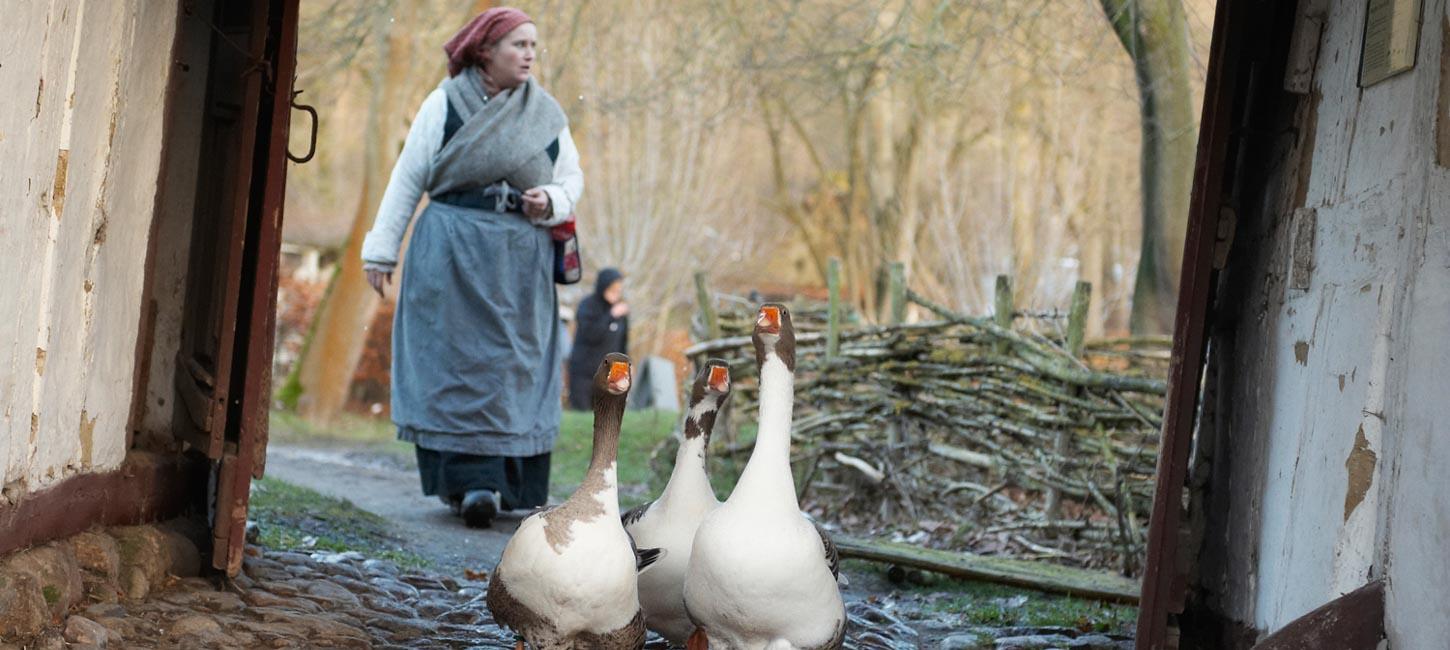
The Fyn Village
Learn more about the living open air museum right here. The Fyn Village invites you inside a typical village on Fyn, as it would have looked like in the 19th century.
Experience Denmark as it was in the age of Hans Christian Andersen
Most people are familiar with Hans Christian Andersen’s fairytales, but do you know what Denmark looked like when the famous author was alive? You can find out at the open air museum Den Fynske Landsby (The Fyn Village). A visit here is like a trip out into the country centuries ago. The museum consists of a number of houses and farms that originally stood in villages all over Fyn and the islands. See the distinctive timber-framed houses of Fyn from the outside and the inside, too. Breathe in the scents from the fields and the blooming hop gardens. And experience life as it was lived in a nineteenth-century village.
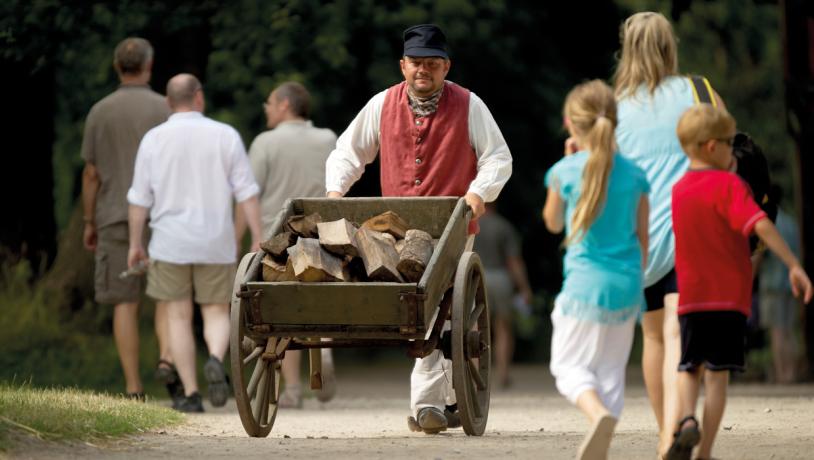
Photo:Destination Fyn
History comes to life in Den Fynske Landsby
During the summer and on selected weekends and public holidays, the old buildings are brought to life as representatives dressed in historical costumes carry out the chores that formed part of everyday life on a nineteenth-century farm. Meet the housewives doing laundry in the scullery, watch the men ploughing the fields, or see how the ‘wool women’ comb, spin and colour the wool to prepare it for knitting, felting and weaving. The representatives use authentic old tools to demonstrate how the work was done – and they are not putting on an act. This means you are welcome to ask them questions about what they are doing and have a chat about how everyday life was lived back in the 1800s.
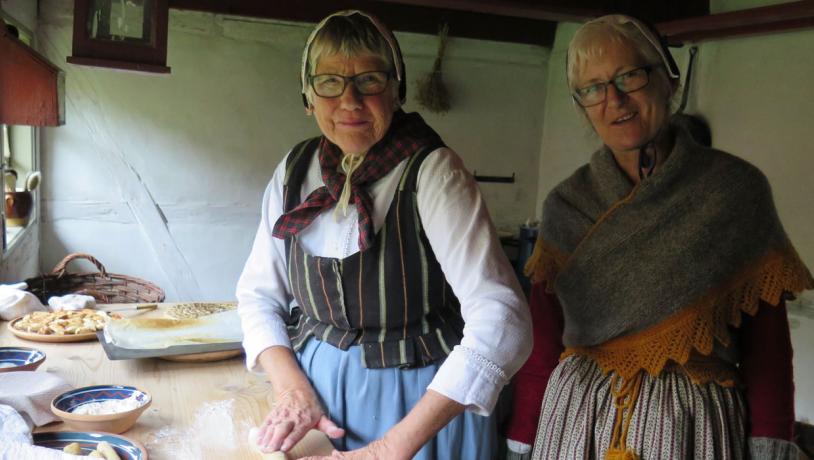
Photo:Destination Fyn
Say hello to a piebald pig
All year round in the stalls, meadows and fields, you can see the livestock typically reared back in the 1800s. Den Fynske Landsby has all the well-known farmhouse animals, most of which stem from authentic Danish breeds. For example, you can see a genuine red Danish dairy cow or a Frederiksborg horse – one of the oldest races in the world. You can also see piebald pigs, common Danish sheep, traditional brown Danish chickens and many other species.
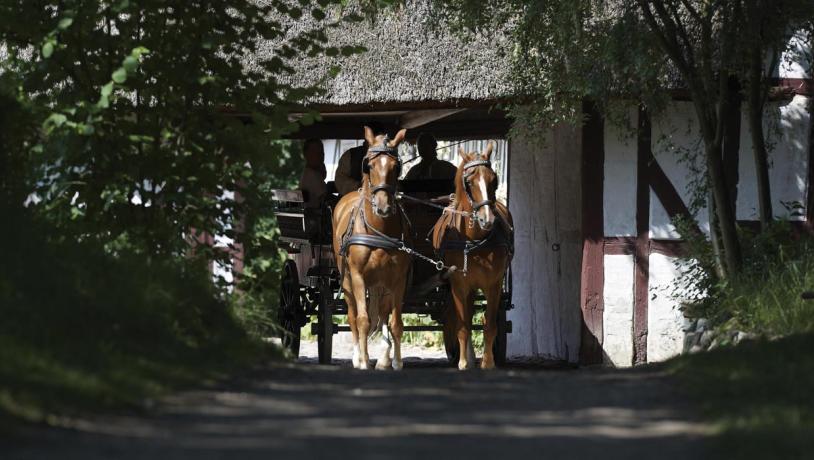
Photo:Destination Fyn
Enjoy the sights and scents of historical self-sufficiency
Gardens played an important role in villages in the nineteenth century, as they allowed people to grow their own vegetables and herbs to use in cooking. Gardens are therefore an important part of Den Fynske Landsby as well, and you can visit cabbage farms, hop gardens, orchards, decorative gardens and more. In addition to helping to relate the history of self-sufficiency in the 1800s, the produce from the gardens is used in preparing food on the old stoves in the village kitchens.
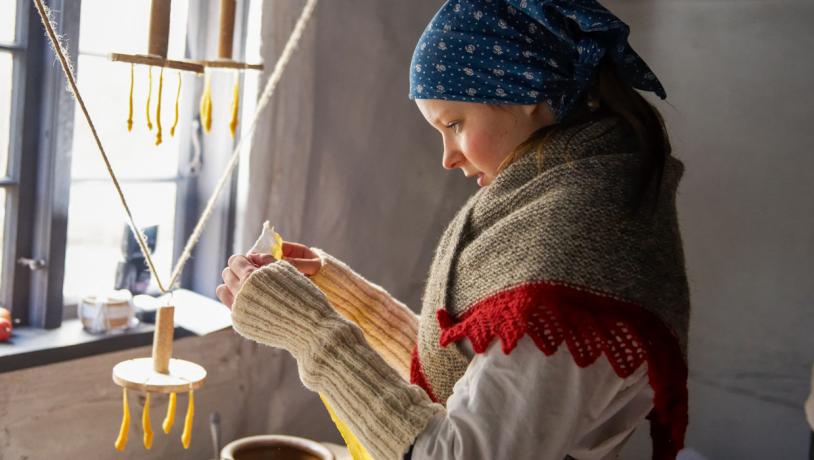
Photo:Destination Fyn
Immerse yourself in history in Den Fynske Landsby
Over and above experiencing history at first hand among the beautiful timber-framed buildings and abundant kitchen gardens in Den Fynske Landsby, you can visit exhibitions that provide additional details about village life in the 1800s. Study the texts and pictures to discover why Den Fynske Landsby looks like it does. You can also find out more about the huge changes that made peasant life easier and extended life expectancy between 1800 and 1900.